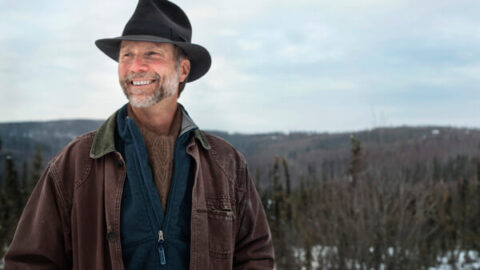“For many years now, I’ve been obsessed with the notion of music as place, and place as music… I want to inhabit the music, to be fully present and listening in that immeasurable space which Malevich called ‘a desert of pure feeling.'” So says John Luther Adams in the introduction to the score of his 1998 work In the White Silence, the piece featured at Miller Theater on October 10, 2015, the third night of a festival devoted to the Alaska-based composer. Adams, who came to music through his career in environmental protection, often evokes space and place with site-specific and site-determined compositions incorporating intricate instrumentation and sounds of nature and weather. Works like Sila: The Breath of the World (2014) and Inuksuit (2009), for anywhere from nine to 99 percussionists, enchant the ear of the listener with innovative structures and techniques while also bringing issues of changing—and even, perhaps, fleetingly temporary—place and space to the fore.
A chronologically earlier endeavor that seems almost bland by comparison, Into the White Silence was brought to life by a veritable new music dream team: a string concerto featuring the JACK Quartet as soloist and the International Contemporary Ensemble as orchestra, joined by harp, celeste, and two vibraphones, all of whom were conducted flawlessly by Steven Schick throughout their elegant, lucid performance. The arpeggiating and twinkling notes of the foreground were a vertical contrast with the more ghostly, gauzy sustained tones of the background. This wash of overlapping tones felt as vivid and peaceful as the barely-discernible rises and falls in a mostly flat, snowy horizon. The drips and drops across this horizon, consisting of plucks on the harp and plunks on percussion, were as mesmerizing as falling snowflakes. Despite such clearly-delineated musical roles, the performers’ sounds melded into a breathless whole. Violist John Pickford Richards and harpist Bridget Kibbey in particular deserve praise for their strong performances.

While painting an exquisite image of an ice- and snow-blanketed tundra, the piece as experienced through time was not quite interesting enough to hold one’s attention—a still-life rather than a soundscape swirling with cold in the dimming light, a nipping or even numbing frost heightening one’s awareness of time and place. A tirelessly-reiterated ascending motif in the harp and vibraphones continually broke across placid sustained tones from the strings, with periodic swells and declines in volume and density. These waves of musical activity were each punctuated by a low note plucked out by the double basses, as if the audience were in need of a heads up every time the musicians inaugurated a new section of the same musical material. These five motivic replications were strung together into a hypnotic and immaculately-performed eighty-minute work. Yet unlike some of Adams’s more adventurous works, nothing about the performance felt challenging from a listener’s standpoint, whether perceptually or conceptually.
As a listener who has spent hours and hours of my life in La Monte Young’s Dream House and otherwise studying drones and minimalism, I have no problems with stasis or incessant repetition in musical works. However, if the stated intention of a piece of music is to evoke a sense of place, it must be evaluated on those terms, and in this piece Adams is simply not as successful as he has been in more recent works. In the White Silence is a polite compositional undertaking by a composer who in other works so brashly comments upon and evokes the duration of place, forcing us to hear and listen to the sounds of our rapidly-changing landscapes and seascapes. The piece makes for an enjoyable listening experience, but by relying on cliché repetitions, it sinks too far into itself, a quagmire swirling on the verge of stasis rather than pushing the listener to hear the sounds of a definitively non-static environment. At their best moments, however, the layers of sound were as white and wondrous as tufts of snow, seemingly frozen in time, yet continually revealing more and more layers of ever whiter and whiter snow beneath.
























